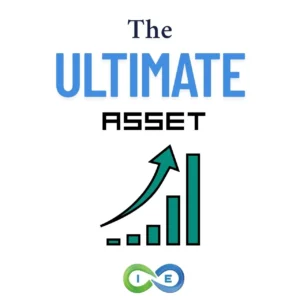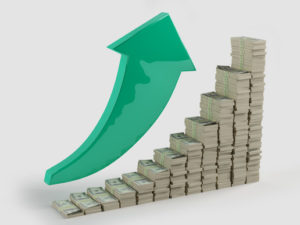The following article is a direct transcript of our webinar Paid Up Additions for Whole Life Insurance. We have linked out to other articles when necessary to give our readers more information about a particular subject. Additionally, there are a few times where we have added additional content where we felt it would benefit the reader. Please leave any comments or feedback below.
A Properly Structured Policy with Paid Up Additions (PUAs)
Steve:
All right. Well, thank you guys for joining us today. We have a really great short webinar that Barry has joined us for, Barry Brooksby. And I’m really excited about this topic and bring it to you guys because it’s a great important aspect of a lot of different things, cash value, life insurance in general and infinite banking. And so this short webinar, Barry is going to run with this and talk about how to use basically paid-up additions with base premium, how to supercharge your policy, and to set this up properly to increase growth and all kinds of things. So with that, Barry, happy to have you. Appreciate it.
Barry:
Thanks, Steve. And what you’re talking about, this is a properly structured policy, and we’re going to go through just high level how this works, the most efficient way for someone to get the best policy right out of the gate. There’s a lot of things that come into play with this as far as the right company and those types of things. Today is going to be focused on base premium and how to use paid-up additions.
So what I want to start off right here at the top is I’m just going to say policy structure. And the way I break this down, we’ll draw a little rectangle here, we’re using whole life insurance for the infinite banking concept because there’s no increasing cost for base premium coverage, it’s time tested, whole life has been around for over 200 years.
The companies that we use here at Insurance and Estates and Focus Wealth Group are high A-rated companies, they’ve been in business over 150 years, dividend-paying mutual companies. And every whole life policy out there has what’s called base premium.
Steve:
Yeah. And Barry, this is something that a lot of people may not… And even in the insurance world, agents may not know about. Correct?
Barry:
That is correct. You’d be surprised.
Steve:
So, interesting structure not commonly known by everybody. It’s exciting.
Barry:
And what’s happening is most insurance agents or advisors will take someone’s full premium and only put it into the base portion of a policy. And the problem with doing this is then you end up with a policy I call, less efficient or less effective. Why? Because you’re primarily buying a lot of life insurance death benefit. There’s zero cash value in year one, and then very slow or little cash value growth as time goes on. And unfortunately, this is how most life insurance policies are designed.
Steve:
Is this why there’s a lot of people out there, maybe with a misnomer about slow policy growth and these kinds of things, Barry?
Barry:
Yeah, absolutely. There are some so-called financial gurus out there that talk negatively about whole life insurance. And some of what they’re saying might be true, but they’re only shedding light on a very small portion of the story.
And so if you hear someone out there saying, hey, never invest in a whole life insurance policy, the returns are horrible, they’re probably talking about this. But if they really understood the full picture, they would see that it’s a tremendous asset, guaranteed, most of the time the rate of returns are going to outperform market-based investments. But you are correct, that’s usually where you’ll hear that or why you’ll hear that.
Steve:
All right. Well, how is this different, Barry? So we got base premium down there.
Barry:
Yep. What we do is we use a supercharged rider called paid-up additions. The acronym for this is PUA. And different companies might call it something different, but ultimately it’s paid-up additions, PUA. And instead of all of your premium going into PUA, what we want to see is the majority of the premium going into the paid-up additions rider.
It’s a special rider that allows for maximizing cash value, and not only Steve does it maximize cash value, but it will also increase the internal rate of return on a policy. Without the PUA rider and if you’re only stuck with base premium, you’re not going to see the aggressive cash value growth that you would have in a PUA rider.
What is dependent on how this is going to grow or work is someone’s age, someone’s health rating, the amount of premium that they want to put into a policy, so all those things are different factors.
And I drill down with every client individually to get the policy structured exactly the way they want it, very aggressively with the PUA.
Steve:
Right. So, Barry, people listening may have questions, why would I want to put cash into a policy, could I put as much as I want, those kind of things. And I’m sure you’re probably going to touch on that, at least for this webinar.
Barry:
Yeah. The big comparison often is if someone is sitting on cash, they’re usually sitting on that inside of a savings account, earning 0%, where you can sit on cash here earning 4, 5, maybe 6%. And the other option is maybe it’s in a 401(k) or an IRA.
Those market-based investments qualified plans lock up your money usually until you’re fifty-nine and a half, so you don’t have access to those funds.
Whereas, if you’re putting extra cash in a paid-up additions rider and that cash is liquid, you can now use it throughout your life and you’re earning a 5% return. It makes a lot more sense than a savings account, a CD, and most market-based investments.
Steve:
Right. And tax deferred, which is huge that I always think.
Barry:
Correct. Even if done correctly, possibly tax-free.
Steve:
There you go.
Barry:
Yeah.
Steve:
And there’s even limits on it because it’s so good, right?
Barry:
It is good. And we’re going to get to that right here. At the top of this line is what’s called the MEC limit, stands for modified endowment contract. And it’s an IRS rule, the life insurance companies abide by it, which simply says, yeah, you can stuff as much cash into these policies as you want, there is no limit, but once a policy is in force, now that in-force policy does have a limit.
And if you ever wanted to put more money into that policy and not cross the MEC, we simply suggest you start another policy. But the goal is to get right up to the MEC limit, not cross it so that all your cash value growth is tax advantage, hopefully, tax-free if you’ve done it correctly.
So now you have tax-free money throughout your life and a supplemental tax-free retirement income stream.
Steve:
So Barry, if this policy is a properly structured cash value policy and the policy itself is the engine, would you say this is like the power sell or the paid-up additions just to illustrate it for people?
Barry:
Yeah, exactly. It’s doing things to the policy to maximize every piece of it. Without a paid-up additions rider, you don’t have that power, you don’t have the energy to really move the policy forward like it could be.
Now, there’s another little key to this. Sometimes we will add an additional term insurance rider, and the term rider can raise the MEC limit.
So if we get into a situation where someone says, You know what? I’m sitting on some extra cash, I want to even put in an additional lump sum in the very first year with the first premium payment, more than likely that lump sum would MEC the policy.
But we can add a term insurance rider, which either has no cost or very little cost to it for roughly seven years and then the MEC limit is raised, they can get that extra cash into the policy. And the term rider is another tool that we use to make these policies more efficient.
Steve:
That’s exciting. And what I think about whenever you and I talk about these things is this little thing that we’re analyzing about these policies, it gives way to all of the other strategies that we usually talk about.
Barry:
Yeah, whether it’s purchasing real estate, you’re going to take down payments from the cash value, you want to use money to reinvest back into your business if you’re a business owner, or maybe you’re looking at another investment. What’s great about the paid-up additions rider is that money is liquid.
Usually, with most companies, about 95% of your cash value is liquid to be used for policy loans. And as we’ve talked about in another webinars, when you take a policy loan, they don’t physically remove that money from your cash value, they put a lien against it. So in essence, your full cash value is still working for you, so there’s no lost opportunity cost.
But that’s the idea, you can either let the money grow in the policy at say 5% net returns or go put it to use. And if you put it to use and keep that money in motion, you’re going to ultimately create more wealth along the way.
Steve:
Yeah. And it’s exciting, we just wrote a little something about retirement planning, that’s one that sometimes people don’t think about.
And the problems with the traditional recommended course of action, and a lot of that has to do with the required distributions on the tax-deferred account.
And this is tax-deferred, but you don’t have that. Pretty exciting too, when people think about their retirement planning and how that can work with this.
Barry:
Yeah. This becomes another piece of the portfolio that allows them actually more options in the future. If you don’t have a properly structured whole life policy in your plan, you have less options in retirement. This does multiple things for you in retirement.
So with that said, this is the idea. When I design policies for clients, we use the paid-up additions rider to get very aggressive on that cash value growth. Now, coincidentally, why do you think most insurance agents out there want to put all of your premium into base?
Steve:
Well, I have an idea. You want me to say it or you want to say it?
Barry:
Yeah. Go ahead.
Steve:
Well, guys, what you need to know and Barry’s hinting at is that the base premium is really where the commission is. So people get worried about how much the advisor is going to be paid, a lot of it’s in base premium.
So the paid-up additions for this kind of thing, Barry being the expert and committed to this, yes, he is actually getting less commission on that than if you were doing all base premium. Is that a fair way to put it, Barry?
Barry:
Fair way to put it. Yeah, that’s correct. And because of that, less commissions paid out, more cash value is there for the client to have, that’s important. And frankly, as you talked about early on, most advisors don’t understand this structure, they’re not familiar with it.
So you want to be talking with an expert. You want to make sure that you’re using the right company, the right structure. It’s very important to make sure day one, you have a properly structured policy moving forward throughout the rest of your life.
Check out our article on the best dividend paying whole life companies
Steve:
And it’s exciting, guys. And, of course, we’re talking about things that we’re actually familiar with, that we actually do. And it’s been a particularly exciting in the climate that we’re currently in, the economic climate.
Barry:
Yeah. Well, Steve, thanks for having me. This has been fun to share. Hopefully, it’s created some value for others, and they’ll want to do something about it.
Steve:
Yeah. We appreciate it, Barry, always. Every conversation we have is exponent and enlightening. I encourage you guys, if you’re watching, you can go below this video and schedule a meeting with Barry. If you have questions, you can certainly inquire, there’ll be some ways to do that, as you can see there below the video. So we’re excited to hear from you and have any questions given to us. Happy to answer and go from there.
Barry:
Thanks, Steve.
Steve:
All right. Thank you, Barry. Appreciate it.





